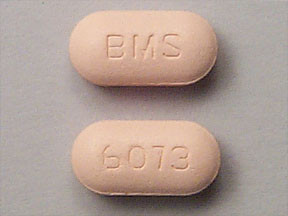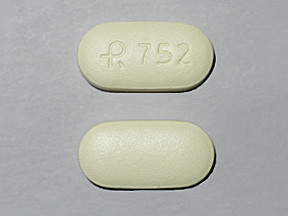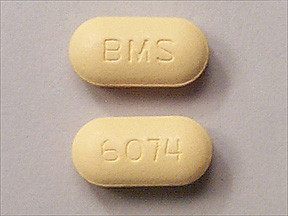GLYBURIDE/METFORMIN TABLET - ORAL
PHONETIC PRONUNCIATION: (GLYE-bure-ide/met-FOR-min)
COMMON BRAND NAME(S): Glucovance
GENERIC NAME(S): glyburide/metformin HCl
Uses
USES: This combination medication is used with a proper diet and exercise program to control high blood sugar in people with type 2 diabetes. It may also be used with other diabetes medications. This product contains 2 medications. Glyburide belongs to the class of drugs known as sulfonylureas. It lowers blood sugar by causing the release of your body's natural insulin and by decreasing the amount of sugar that your liver makes. Metformin works by decreasing the amount of sugar that your liver makes and that your stomach/intestines absorb. Both of these medications work by helping to restore your body's proper response to the insulin you naturally produce. Controlling high blood sugar helps prevent kidney damage, blindness, nerve problems, loss of limbs, and sexual function problems. Proper control of diabetes may also lessen your risk of a heart attack or stroke.
How to use GLYBURIDE/METFORMIN TABLET - ORAL
HOW TO USE: Read the Patient Information Leaflet if available from your pharmacist before you start taking this medication and each time you get a refill. If you have any questions, ask your doctor or pharmacist. Take this medication by mouth with meals as directed by your doctor, usually once or twice a day. Drink plenty of fluids while taking this medication unless otherwise directed by your doctor. The dosage is based on your medical condition and response to treatment. To reduce your risk of side effects (such as upset stomach and low blood sugar), your doctor may direct you to start this medication at a low dose and gradually increase your dose. Your doctor will adjust your dose based on your blood sugar to find the best dose for you. Follow your doctor's instructions carefully. If you are already taking another diabetes drug (such as chlorpropamide), follow your doctor's directions carefully for stopping the old drug and starting this combination medication. If you are also taking colesevelam, take glyburide/metformin at least 4 hours before colesevelam. Use this medication regularly to get the most benefit from it. To help you remember, take it at the same time(s) each day. It may take up to 2 weeks before you get the full benefit of this drug. Tell your doctor if your condition does not improve or if it worsens (your blood sugar is too high or too low).
Side Effects
Precautions
Interactions
Overdose
Images

- color
- pale orange
- shape
- oblong
- imprint
- BMS, 6073

- color
- white
- shape
- oblong
- imprint
- logo 751

- color
- yellow
- shape
- oblong
- imprint
- logo 752

- color
- yellow
- shape
- oblong
- imprint
- logo 752

- color
- white
- shape
- oblong
- imprint
- logo 751

- color
- yellow
- shape
- oblong
- imprint
- logo 752
Reviews
Faq for GLYBURIDE/METFORMIN TABLET - ORAL
Glyburide/Metformin Tablet is used to treat type 2 diabetes. It helps to control blood sugar levels in people who are unable to achieve blood sugar control with diet and exercise alone.
This medication contains two different medicines, glyburide and metformin. Glyburide helps the pancreas to produce more insulin, while metformin reduces glucose production in the liver and improves the body's response to insulin.
Common side effects may include nausea, vomiting, stomach upset, diarrhea, headache, or dizziness. It is important to notify your doctor if any side effects become severe or persistent.
It is generally not recommended to use Glyburide/Metformin Tablet during pregnancy or breastfeeding. Consult with your doctor for alternative options to manage diabetes during these periods.
Glyburide/Metformin Tablet is usually taken with meals. Follow the dosage and instructions provided by your doctor. It is important to regularly monitor blood sugar levels and maintain a healthy diet and exercise routine while taking this medication.
Yes, Glyburide/Metformin Tablet can cause low blood sugar. It is important to regularly check your blood sugar levels, especially during periods of increased physical activity or if you have skipped a meal. Symptoms of low blood sugar may include shakiness, sweating, rapid heartbeat, and blurred vision.
Glyburide/Metformin Tablet may interact with certain medications, including beta-blockers, diuretics, and nonsteroidal anti-inflammatory drugs (NSAIDs). Inform your doctor about all the medications you are taking to prevent potential drug interactions.
It is generally not recommended to consume alcohol while taking Glyburide/Metformin Tablet. Alcohol can lower blood sugar levels and increase the risk of side effects. Discuss with your doctor about alcohol consumption and its potential impact on your diabetes management.
The effects of Glyburide/Metformin Tablet can be seen within a few days of starting the medication. However, it may take a few weeks to reach the full therapeutic effect. It is important to continue taking the medication as prescribed and follow up with your doctor regularly.
Warning
WARNING: Rarely, too much metformin can build up in the body and cause a serious (sometimes fatal) condition called lactic acidosis. Lactic acidosis is more likely if you are an older adult, if you have kidney or liver disease, dehydration, heart failure, heavy alcohol use, if you have surgery, if you have X-ray or scanning procedures that use iodinated contrast, or if you are using certain drugs. For some conditions, your doctor may tell you to stop taking this medication for a short time. Ask your doctor or pharmacist for more details. Stop taking this medication and get medical help right away if you have any symptoms of lactic acidosis, such as unusual tiredness, dizziness, severe drowsiness, chills, blue/cold skin, muscle pain, fast/difficult breathing, slow/irregular heartbeat, or stomach pain with nausea/vomiting/diarrhea.
Disclaimer
IMPORTANT: HOW TO USE THIS INFORMATION: This is a summary and does NOT have all possible information about this product. This information does not assure that this product is safe, effective, or appropriate for you. This information is not individual medical advice and does not substitute for the advice of your health care professional. Always ask your health care professional for complete information about this product and your specific health needs.


No Reviews Yet